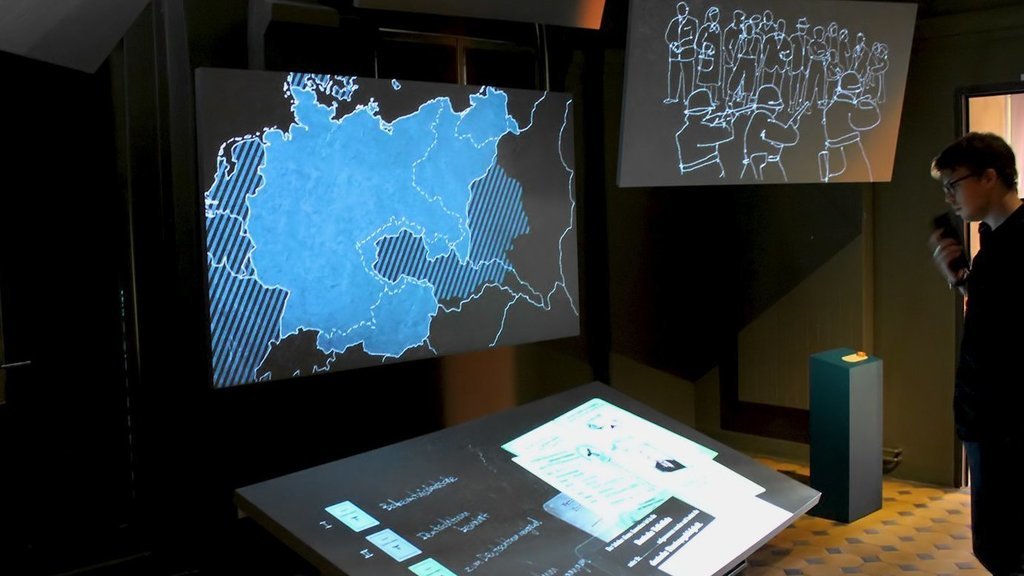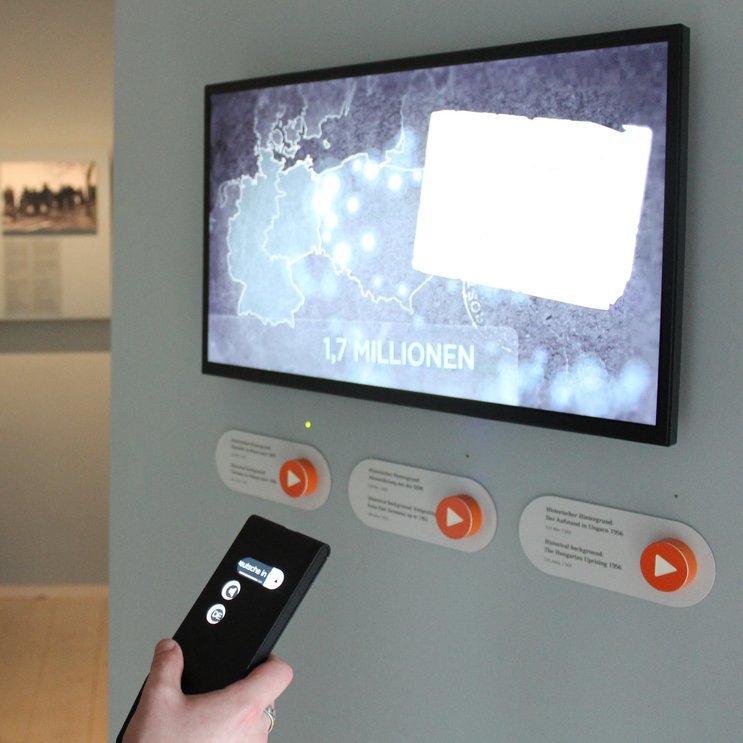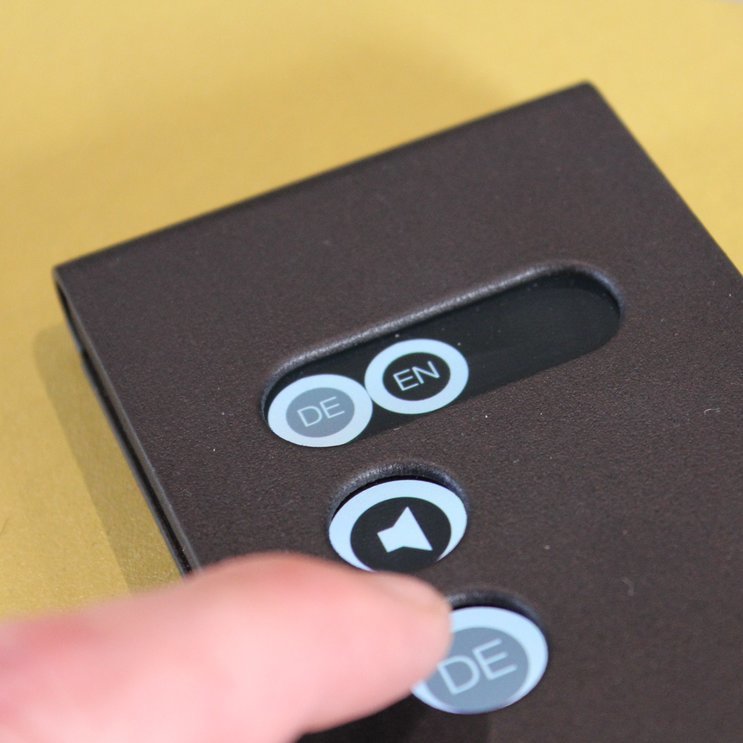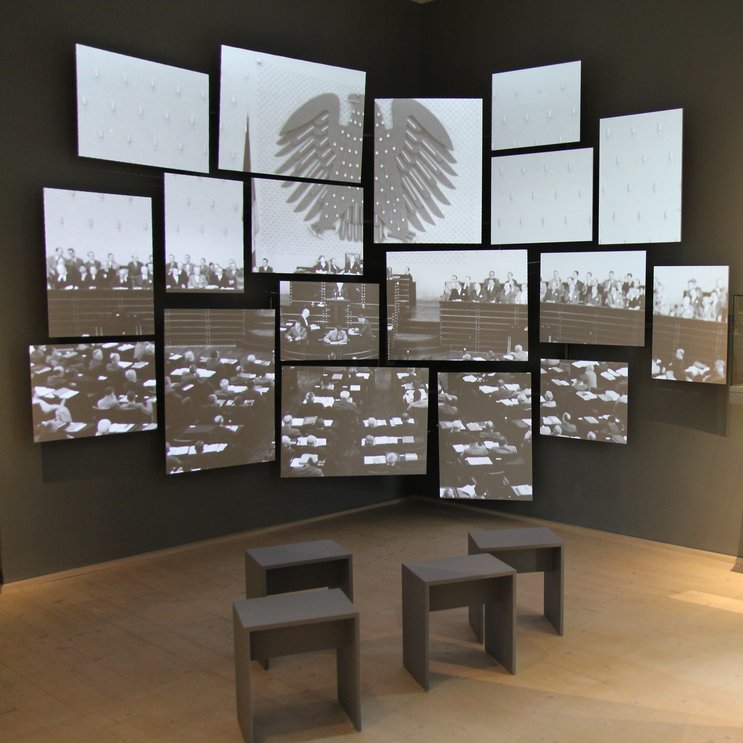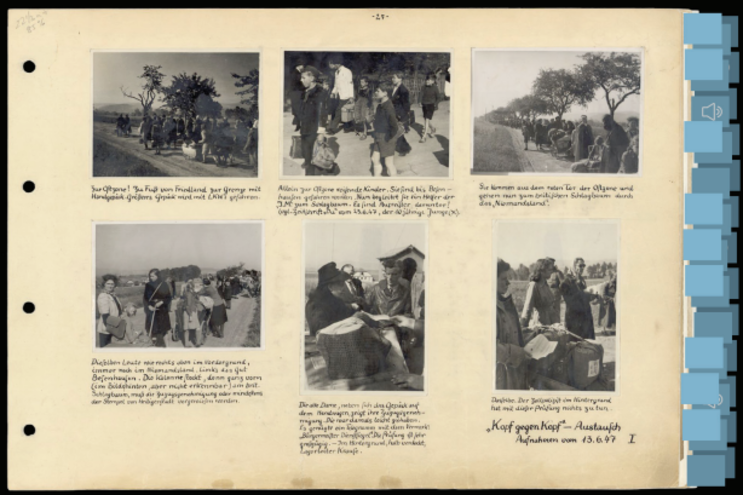ALL-IN-ONE SOLUTION
FROM TECHNICAL IDEA TO TURNKEY DELIVERY
As the overall technical planner and technology provider, who have been working with the scenographers from the beginning, we were responsible for all media technology in all exhibition spaces.
This role enabled us to find smart solutions to exceed the expectations of what the scenographers wanted in each case, while staying within the preset budget limits.
With their wide-ranging content, the media installations represent an integral part of the exhibition. The exhibition creates a multi-sensory experience that invites all interested persons to explore the history of the Friedland Transit Camp.
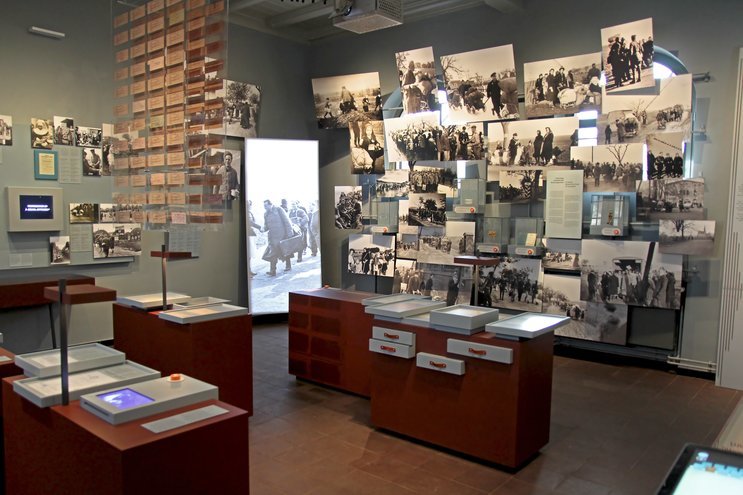
About the historic Friedland Camp
The “Friedland Camp” was set up by order of the British occupying forces in 1945 to serve as the main reception center for German refugees, displaced persons, and returning soldiers.
Following its establishment, the Friedland Transit Camp served as the initial reception center in the Federal Republic of Germany for more than four million people and was nicknamed “the gateway to freedom”.
About the Friedland Museum
In 2006, the state government of Lower Saxony was commissioned to recognize the historic significance of the Friedland Transit Camp in an appropriate way by establishing a museum.
A competition for a museum design was accordingly announced in 2013, which Gillman Schnegg won in partnership with MESO.
The Friedland Museum opened in 2016 and since then has been telling the story of the Transit Camp, from 1945 to the present day, from various points of view
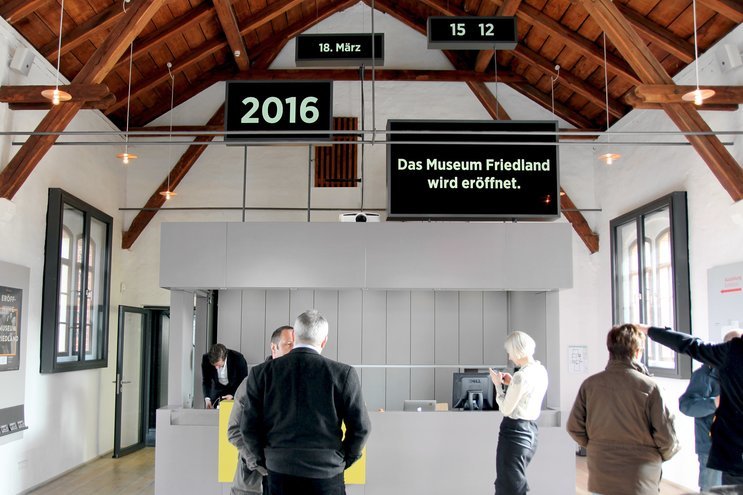
Personal audio guide
Individualized experience with no button-pressing
We developed the audio guide using a standard smartphone with a bespoke Android app.
The specially designed case covers the screen, so that the visitor’s attention is completely focused on the physical exhibits.
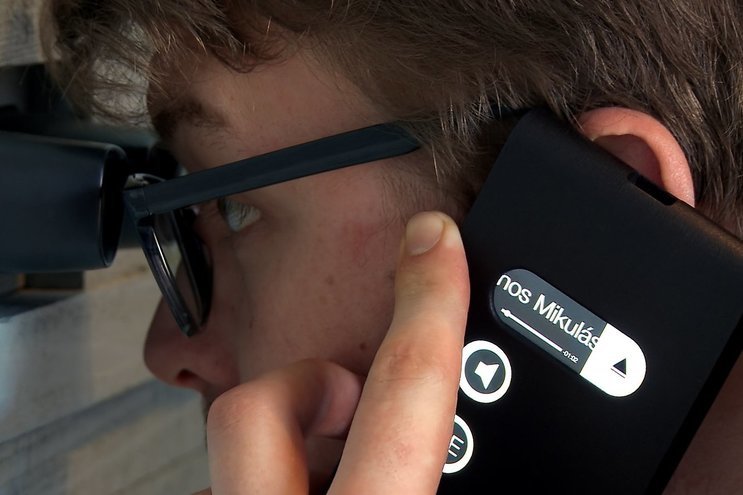
Any type of content is activated just by holding the media guide casually against the orange play buttons.
Driven by the integrated NFC functionality, this technology is simple and proven.
It can distinguish between a large number of different exhibits within a very small space and serves content language-aware.
Intelligent media system
Bringing physical exhibits to life
The museum presents more than 400 exhibition items in a total of 400 m² (4,300 square feet), including photos, text items, other objects, and multimedia exhibits. More than 100 information points are linked to each other through our specially programmed operating system.
The information points can be programmed to start different video clips, illumination effects, or play back media on the audio guide. We developed various customized video player solutions that send special synchronization signals to play lip-synced multilingual audio on the audio guide.

This project is a very nice definition of how we see museums in the future, as the role of media has changed very much. We are getting to a point where relatively sophisticated programming is becoming a standard in a museum system.
Multiple projection mapping installations show material on a large number of screens using only a single projector. The video and information graphics combine to form a scenographic medium.
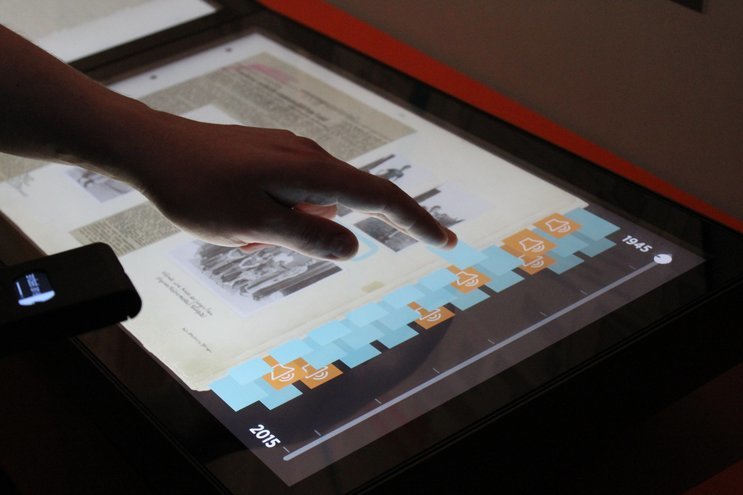
The “digital chronicle” of the camp is the core historical content.
The original chronicle started documenting life in the camp around 1945, including notes, photos, letters, press clippings, and other mementos of life in the camp. For the digital replica, we used two monitors at a scale of 1:1
Newspaper articles and handwritten comments are viewed augmented with transcriptions and translations. Small-format original photo prints can be enlarged to full-screen.
The “multi-monitor calendar” combines information from a historical timeline with the current date and a calendar.
Thus the foyer of the museum provides a review of historic milestones combined with information about current events.
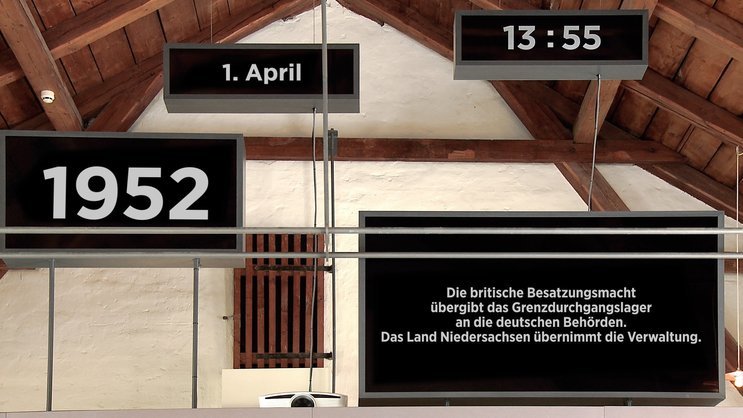

Curious about our approach? Feel free to get in touch!
Max Wolf Partner +49 69 24 000 322 max.wolf@meso.design max.wolf@meso.design +49 69 24 000 322
MESO Digital Interiors GmbH
Gutleutstr. 96 . 60329 Frankfurt . Germany
Team
Max Wolf, Johannes Roth, Valérie-Françoise Vogt, Johannes Lemke, Sebastian Kujas, Theron Burger, Timon Skerutsch, Anton Kluev, Aeneas Stankowski, Anna Rack, Moritz Cramer
